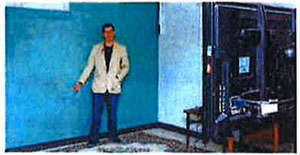
This course is designed to introduce students to the basics of video design, editing, production, and audio design and editing through the practice of in-studio and class production. Students will use professional-grade equipment, learn to shoot quality video and run the production studio. Students are encouraged to tell stories that not only inform, but entertain. They will learn about the various stages of film production by writing scripts, creating storyboards, interviewing subjects, and performing on camera.
Course Description – Digital Media Production I and II
This course is designed to introduce students to the basics of multimedia communications through the practice of in-studio and class projects, while also exploring 2D and 3D mediums. Students will use professional-grade equipment, learn to shoot quality video, and run our video production studio. We will additionally cover topics relating to graphic design and 3D modeling/visual effects for film using several industry-relevant software packages.
 Students are encouraged to tell stories that not only inform but entertain. They will learn about the various stages of film production by writing scripts, creating storyboards, set and lighting design, interviewing subjects, editing footage, and performing on camera.
Students are encouraged to tell stories that not only inform but entertain. They will learn about the various stages of film production by writing scripts, creating storyboards, set and lighting design, interviewing subjects, editing footage, and performing on camera.
Competencies are derived from the NH-CTE Digital Communication and Media/Multimedia guidelines, as well as elements from the National Association of Photoshop Professionals and the International Society for Technology Education.
View the Digital Media Production Brochure
Interested in learning more?
Apply Here for More Details….
View a Video Produced by CTC Students

